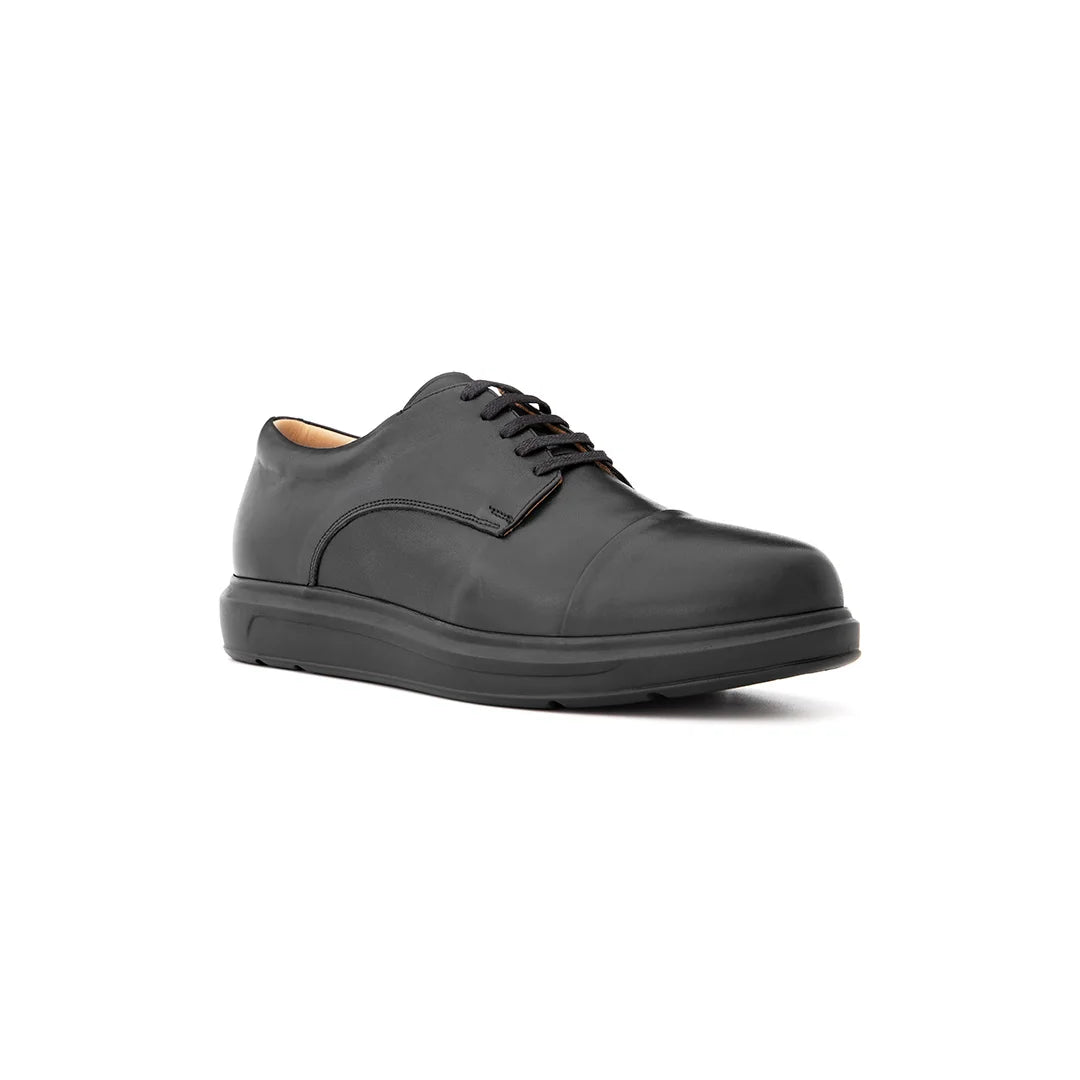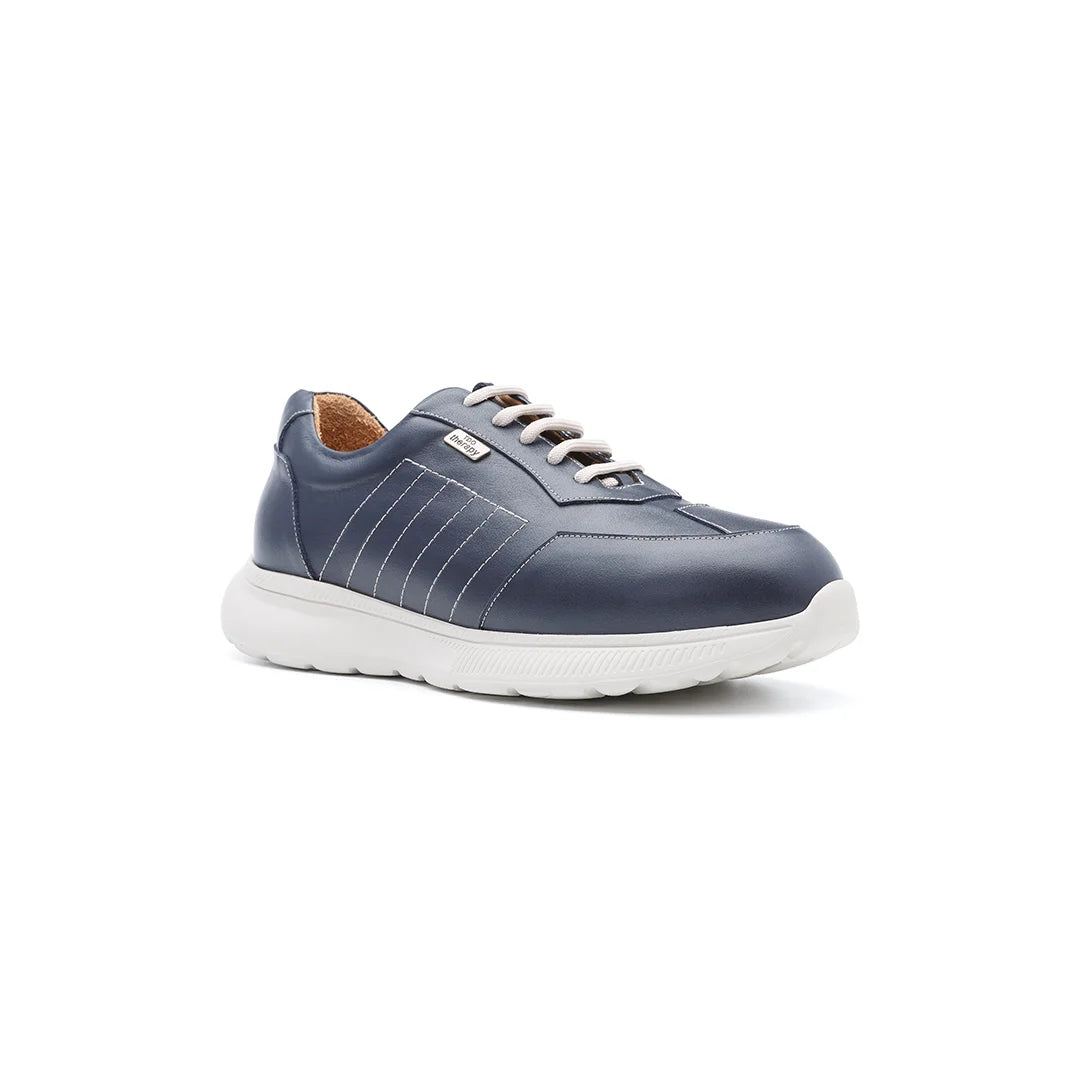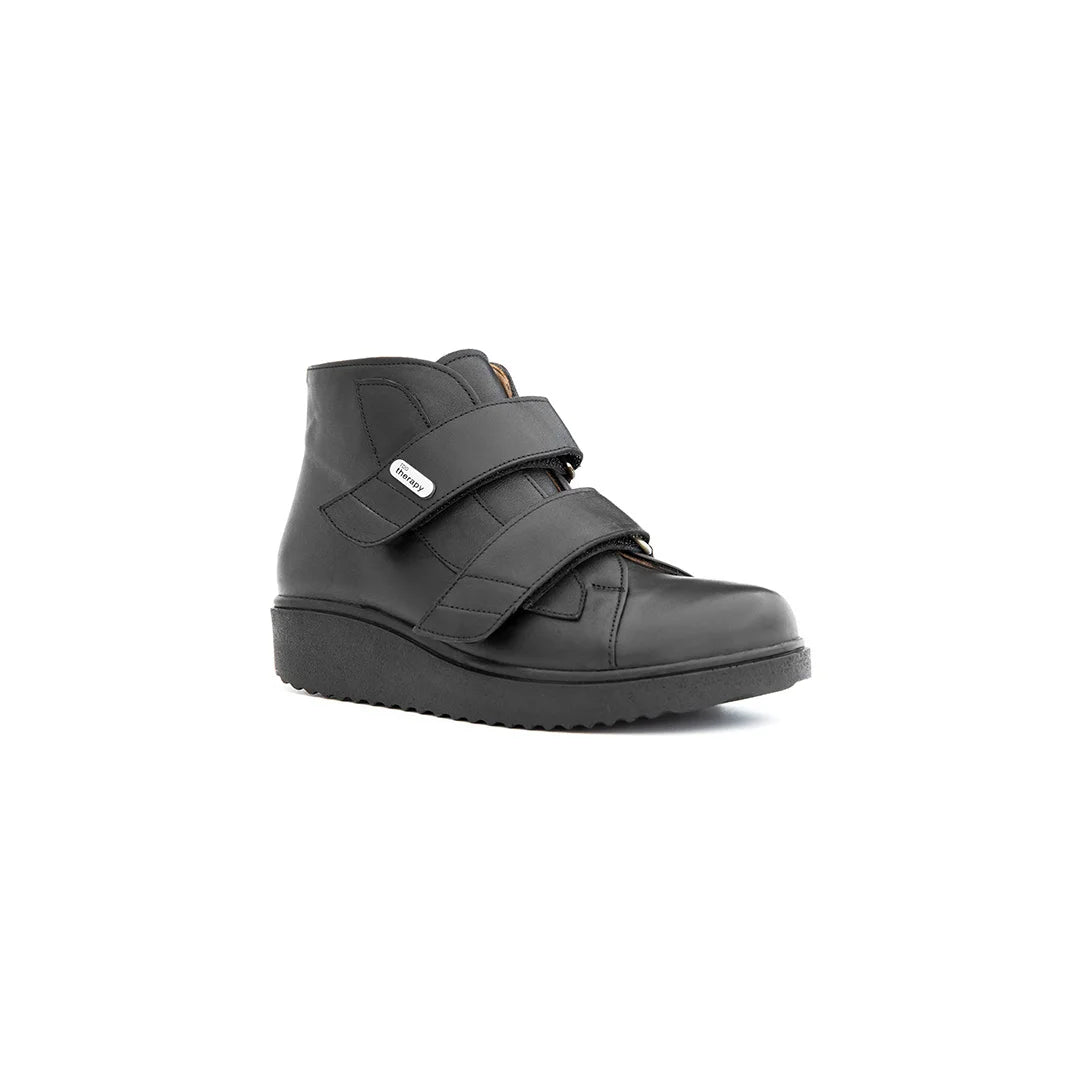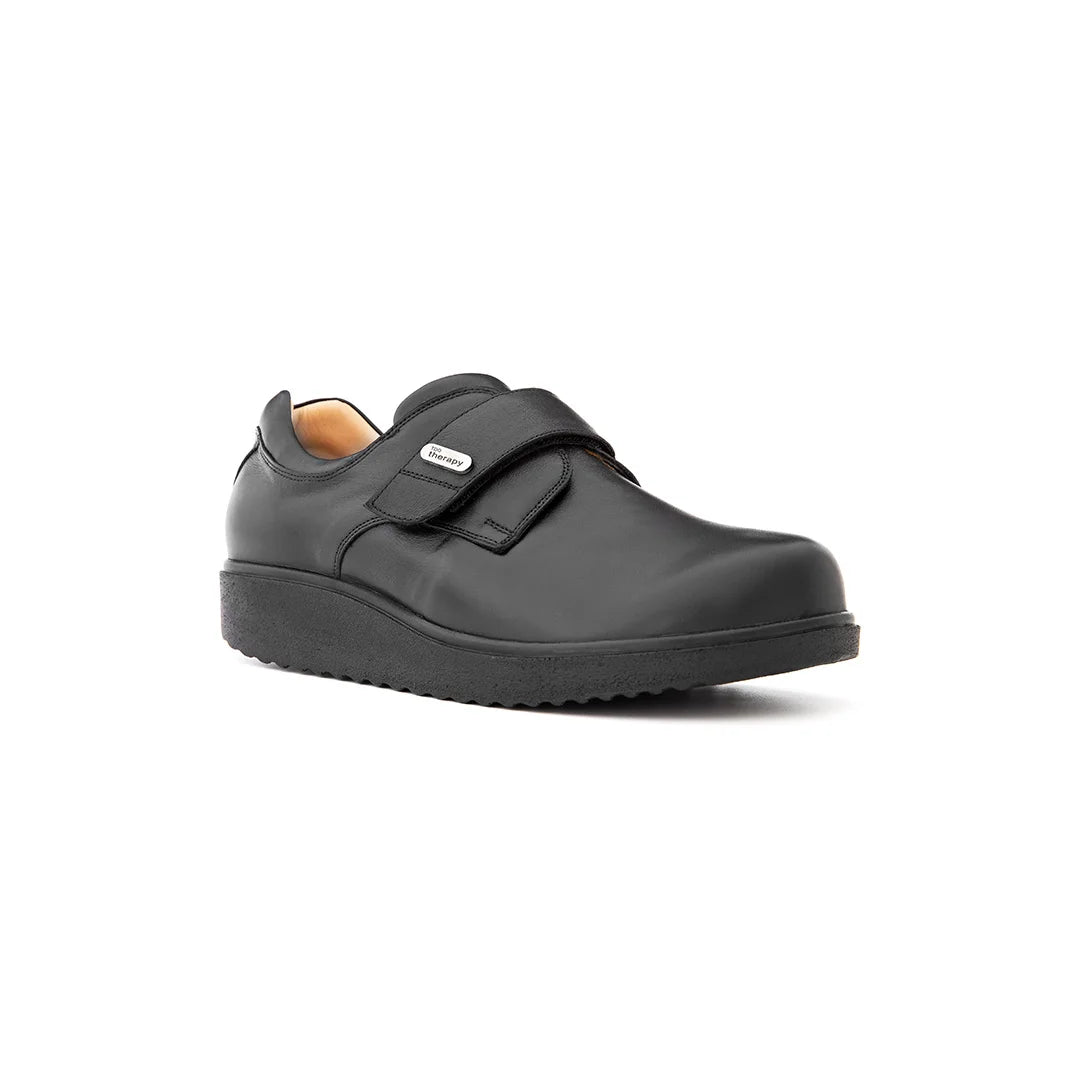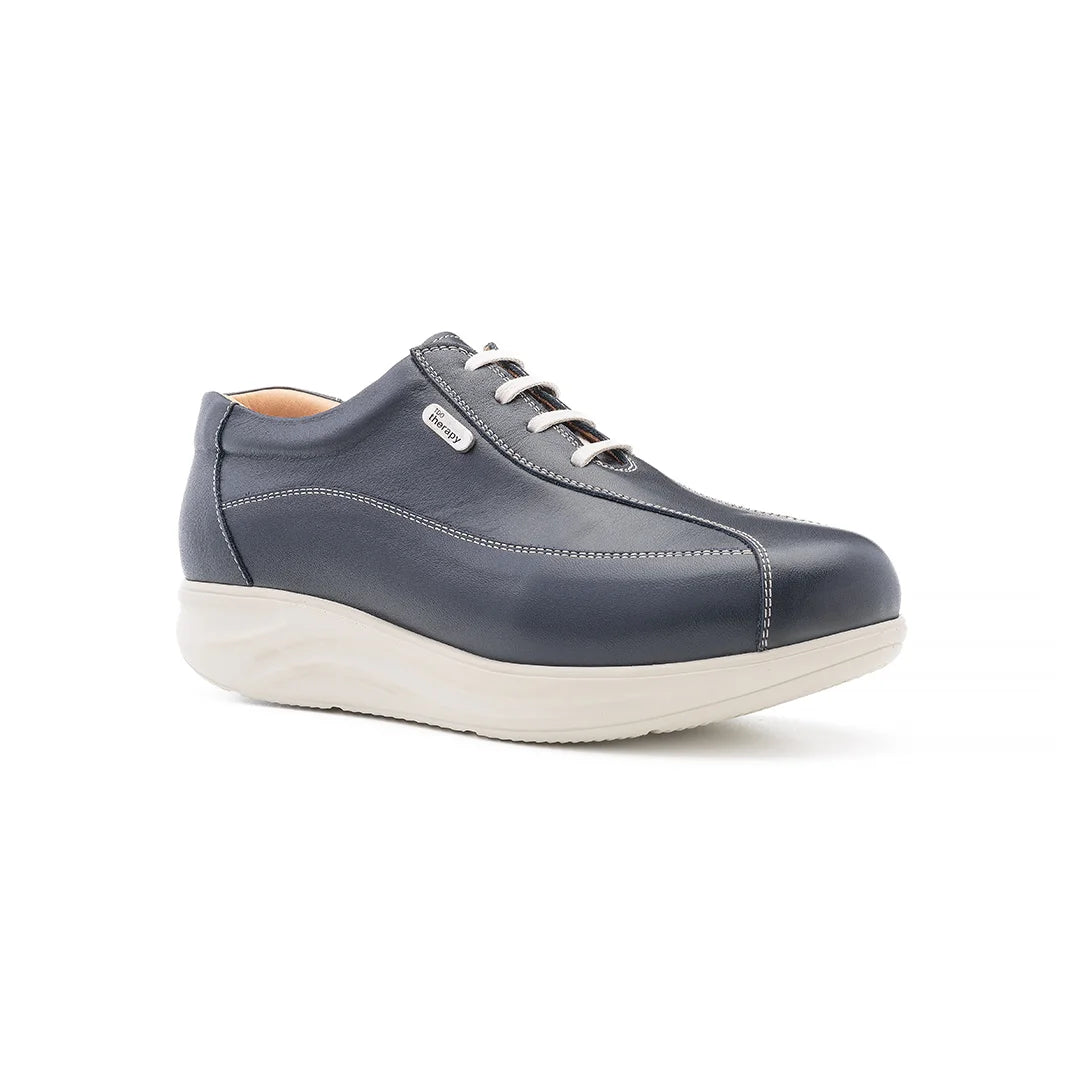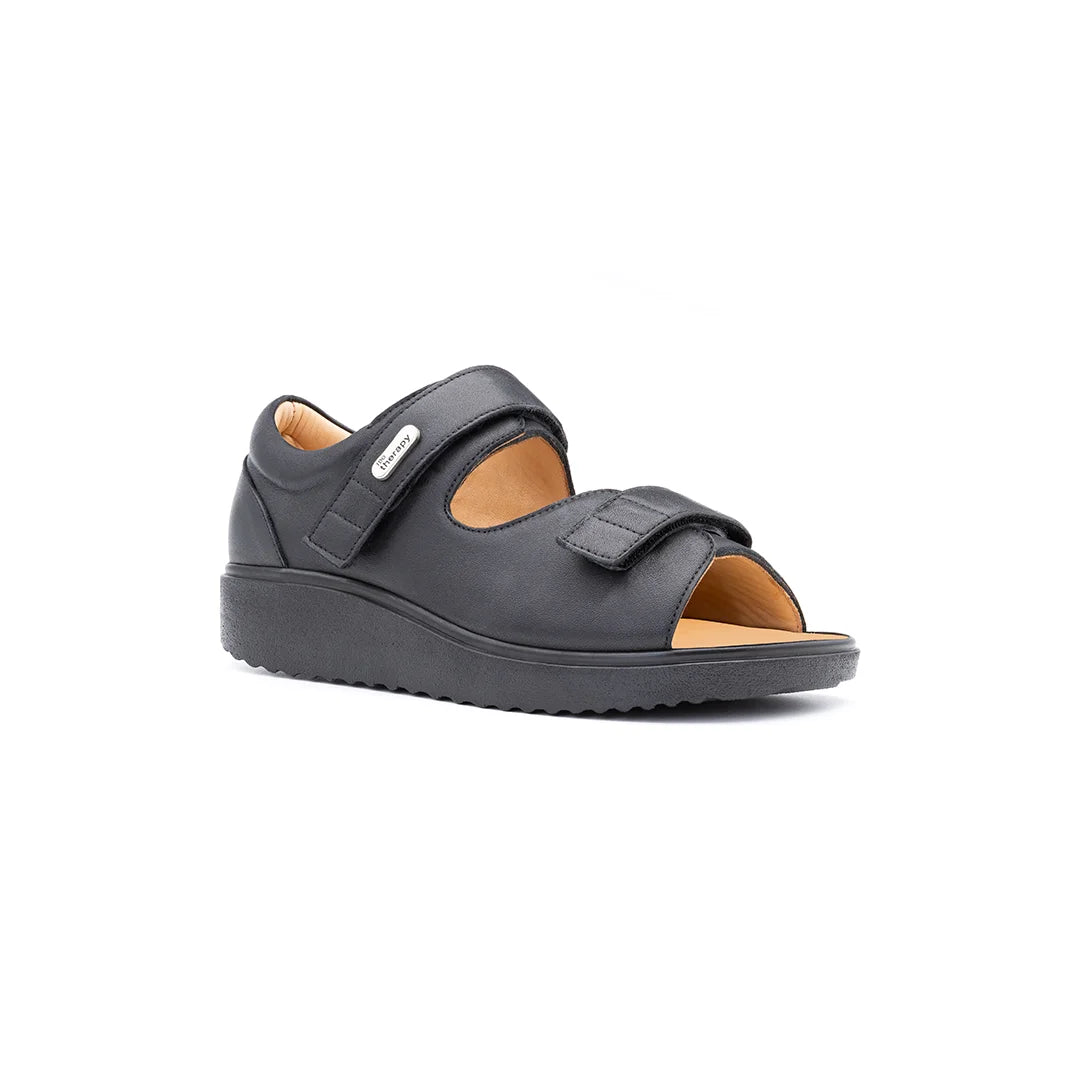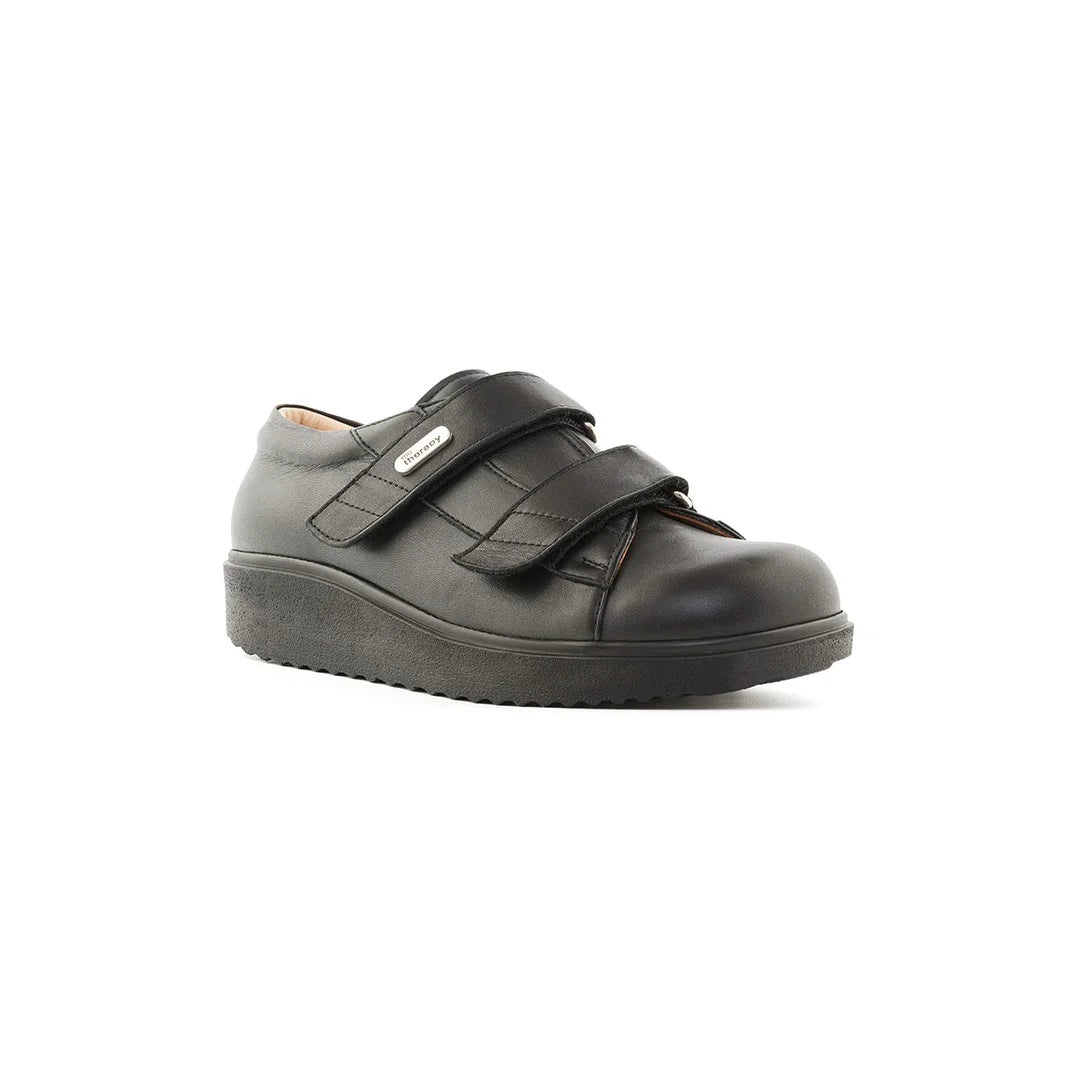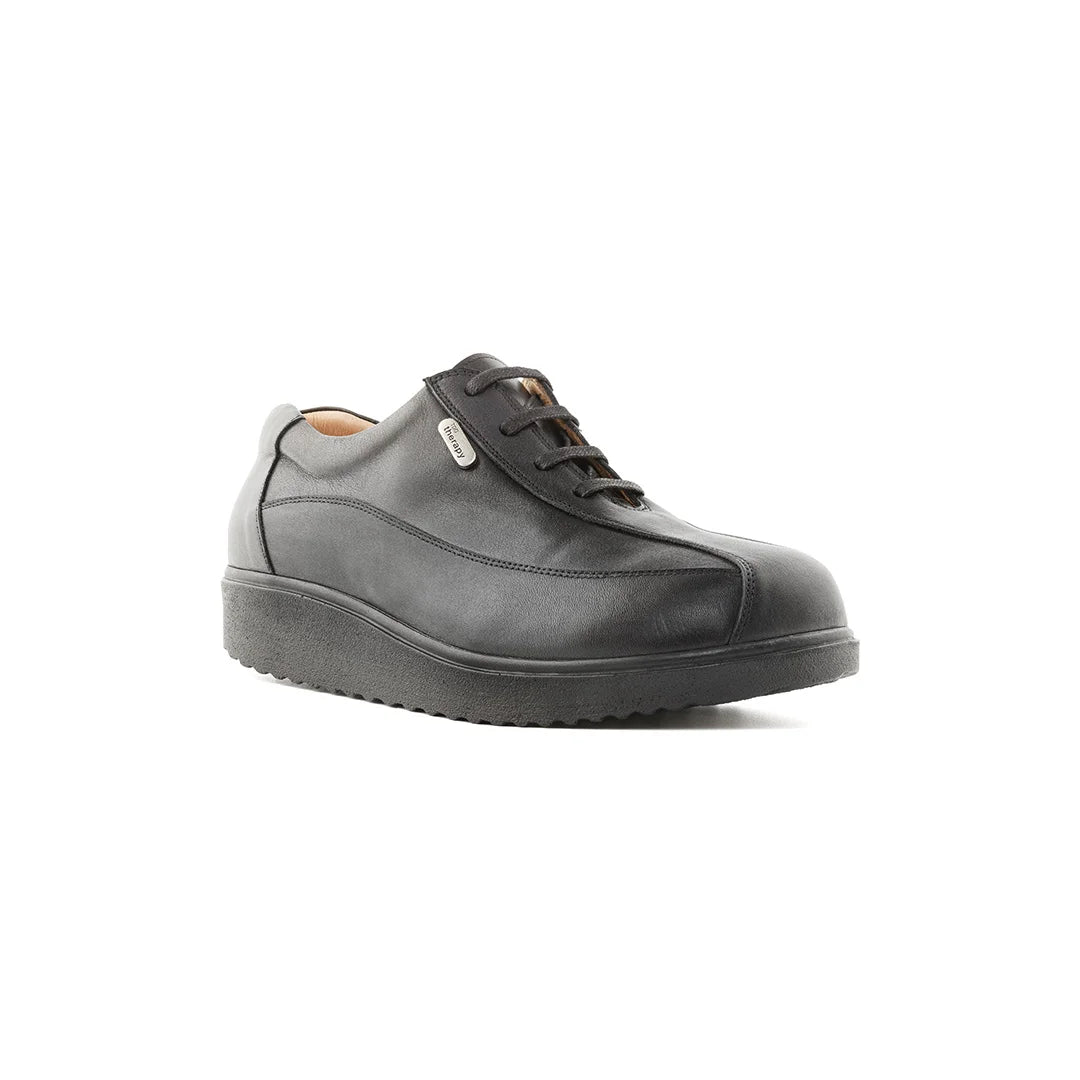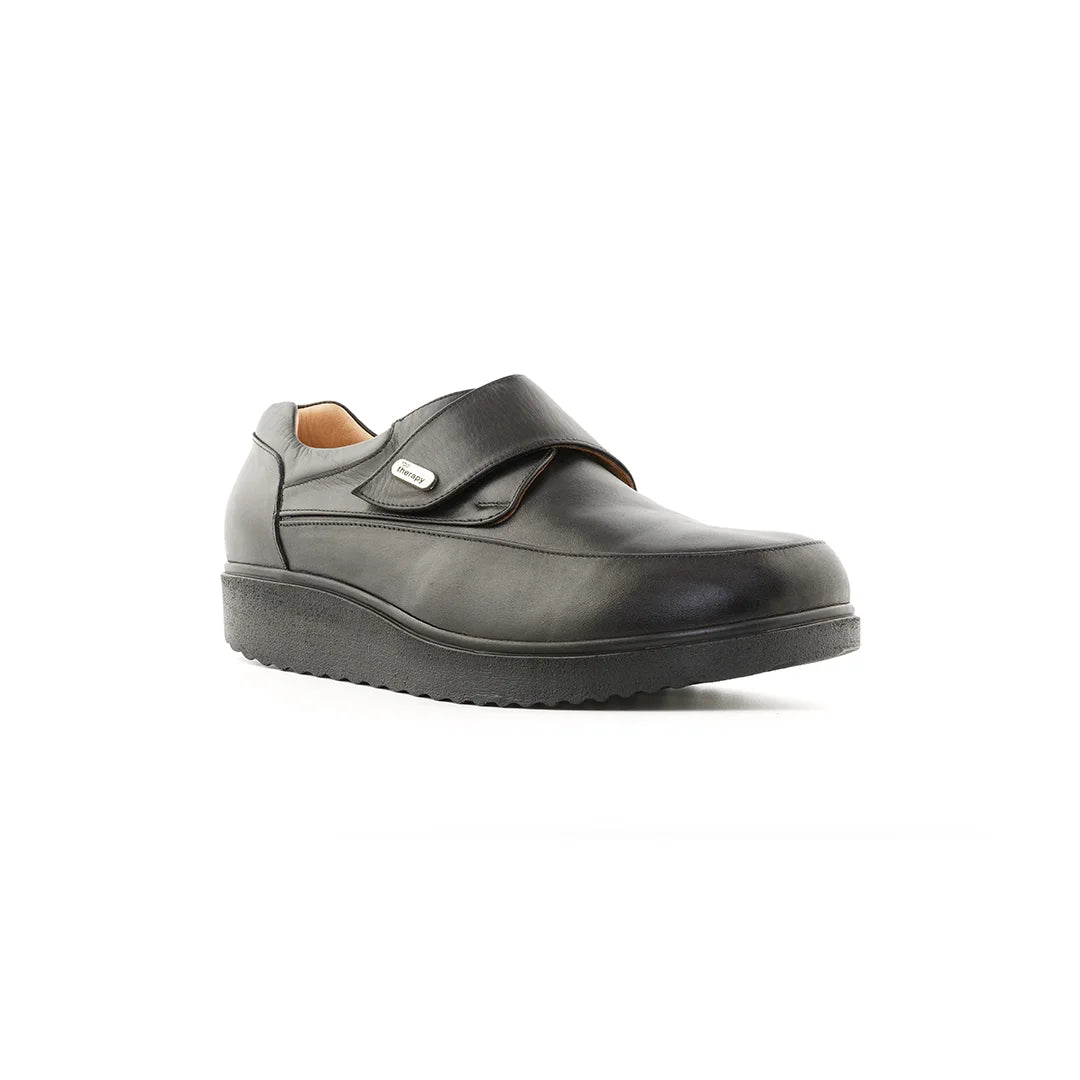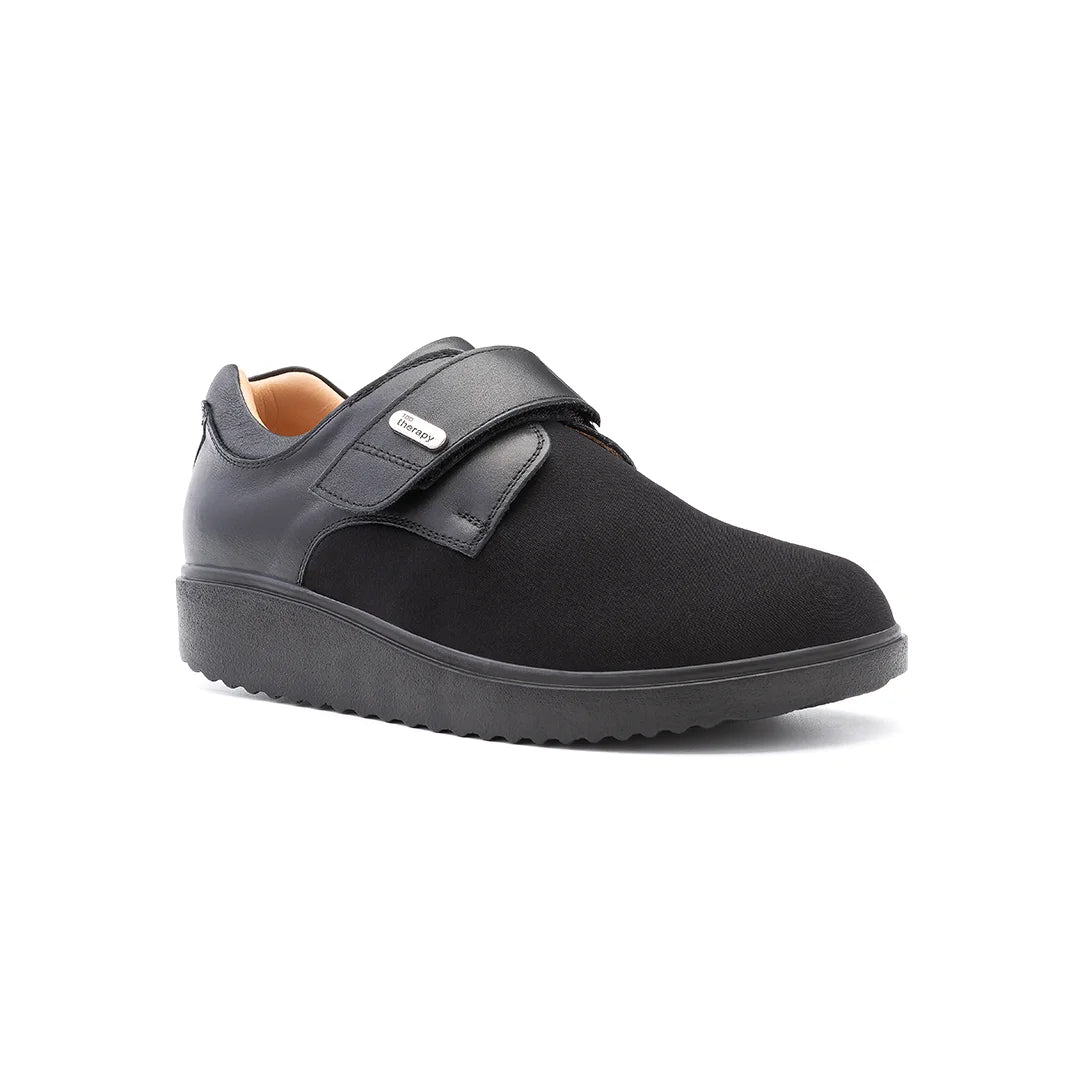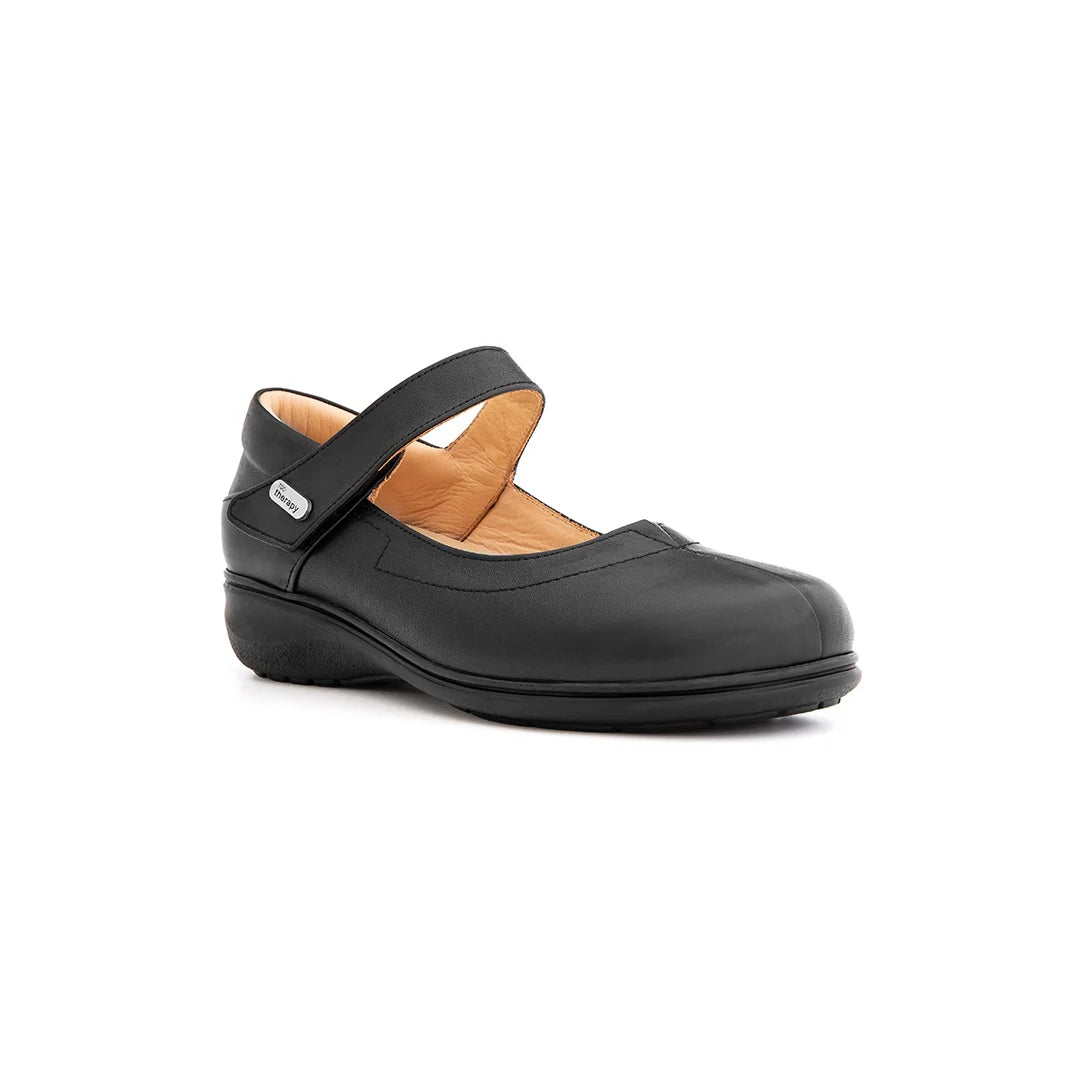Flat feet, a condition where the arches of the feet collapse or are underdeveloped, affect millions of people worldwide. If you’ve ever experienced foot pain, fatigue, or discomfort in your knees and back after a long day, your footwear might be part of the problem—or the solution. Choosing the right shoes can transform your daily comfort and mobility, especially if you have flat feet. But what exactly makes an orthopedic shoe flat-foot friendly? At TDO Therapy, we specialize in helping individuals find personalized solutions for foot health, including expert guidance on selecting footwear that supports flat feet.
In this guide, we’ll explore why footwear matters for flat feet, break down the essential features of flat-foot friendly orthopedic shoes, and share practical tips to help you make informed choices. Whether you’re dealing with mild discomfort or chronic pain, understanding what to look for in footwear can make all the difference. Let’s dive into the details and answer the question: What makes footwear for flat feet truly effective?
Understanding Flat Feet and Why Footwear Matters
Flat feet, also known as pes planus, occur when the arches of the feet are either underdeveloped or collapse entirely, causing the entire sole to rest flat against the ground. This condition can be congenital (present from birth) or develop over time due to factors like injury, aging, or excessive strain. While some people with flat feet experience no symptoms, others deal with discomfort that ranges from mild foot fatigue to severe pain in the feet, ankles, knees, hips, or lower back.
Why does footwear play such a critical role for flat feet? The answer lies in biomechanics. Flat feet often lead to overpronation, where the foot rolls inward excessively during walking or running. This misalignment puts undue stress on the joints and muscles, leading to discomfort or injury over time. Footwear for flat feet is designed to counteract these issues by providing the support and stability that your feet lack naturally. Orthopedic shoes, in particular, are engineered to promote proper foot alignment, reduce strain, and enhance overall comfort.
For example, wearing unsupportive shoes—like flimsy sandals or overly flexible sneakers—can exacerbate flat foot symptoms, making activities like walking or standing for long periods feel exhausting. On the other hand, well-designed orthopedic shoes act like a foundation for your feet, distributing weight evenly and minimizing pressure on vulnerable areas. At TDO Therapy, we’ve seen firsthand how the right footwear can improve quality of life for those with flat feet, and we’re here to guide you toward solutions that work. So, what should you look for in footwear to ensure it’s flat-foot friendly?
Key Features of Flat-Foot Friendly Orthopedic Shoes
When searching for footwear for flat feet: what makes an orthopedic shoe flat-foot friendly?, the answer lies in specific design elements that address the unique needs of flat-footed individuals. Orthopedic shoes aren’t just about comfort—they’re built to correct biomechanical imbalances and provide lasting support. Below, we outline the must-have features to look for when choosing footwear for flat feet, ensuring you get the stability and relief you need.
1. Robust Arch Support
The hallmark of flat-foot friendly shoes is strong, structured arch support. Since flat feet lack a natural arch, orthopedic shoes include a contoured insole or midsole that mimics this curve, helping to lift and stabilize the foot. Good arch support prevents the foot from collapsing inward (overpronating) and distributes weight evenly across the sole. Look for shoes with firm, non-collapsible arches—soft or cushiony insoles may feel comfortable initially but often fail to provide adequate support for flat feet.
2. Reinforced Heel Stability
A sturdy heel counter (the rigid part surrounding the back of the shoe) is essential for controlling pronation and maintaining proper foot alignment. Shoes with reinforced heel support keep your foot securely in place, reducing the risk of ankle rolling or joint strain. When trying on footwear for flat feet, check that the heel counter feels snug without being restrictive, providing a stable base for every step.
3. Wide Toe Box
Flat feet often benefit from a wider toe box, which allows your toes to spread naturally without being cramped. A spacious toe area prevents pressure points and promotes healthy foot movement, reducing the risk of blisters or discomfort. Orthopedic shoes with a wide toe box are particularly helpful if you experience swelling or have wider feet due to flatness.
4. Balanced Cushioning
While cushioning is important for shock absorption, flat-foot friendly shoes strike a balance between softness and structure. Too much cushioning can destabilize the foot, while too little can cause discomfort. Look for shoes with moderate padding in the midsole, often made from materials like EVA foam or gel, to absorb impact without compromising support. This feature is especially important if you’re on your feet all day or engage in activities like walking or light running.
5. Motion Control and Firm Midsoles
Flat feet require shoes with motion control to limit excessive inward rolling. A firm midsole provides the necessary rigidity to support the arch and prevent overpronation, unlike overly flexible shoes that can worsen flat foot symptoms. When shopping for footwear for flat feet, test the shoe’s flexibility— it should bend slightly at the toe but resist twisting in the middle.
At TDO Therapy, we often recommend combining orthopedic shoes with custom insoles for individuals with severe flat feet. Our personalized assessments can help you find footwear that incorporates these features, tailored to your unique foot shape and lifestyle. By prioritizing these design elements, you can ensure your shoes work with your feet, not against them.
How to Choose the Right Footwear for Flat Feet
Now that you know what makes an orthopedic shoe flat-foot friendly, how do you go about choosing the perfect pair? Selecting footwear for flat feet involves more than just picking a supportive shoe off the shelf—it requires careful consideration of fit, function, and your daily needs. Here are practical tips to guide you through the process, ensuring you walk away with shoes that feel great and support your foot health.
1. Try Shoes On in the Evening
Your feet naturally swell throughout the day, especially if you have flat feet. To ensure a proper fit, try on shoes in the late afternoon or evening when your feet are at their largest. This helps you avoid buying shoes that feel tight after a long day of wear. Bring along any socks or insoles you plan to use to get an accurate sense of how the shoes will feel in real-world conditions.
2. Prioritize Proper Sizing and Width
Flat feet often require wider shoes to accommodate the foot’s shape and prevent pinching. Many orthopedic brands offer wide or extra-wide options, so don’t settle for a standard width if it feels restrictive. Pay attention to both length and width when measuring your feet, and consider getting a professional fitting at a specialty store or through services like those offered at TDO Therapy. A well-fitted shoe should feel snug in the heel and midfoot while leaving enough room for your toes to wiggle.
3. Test for Support and Stability
When trying on footwear for flat feet, take a few steps to assess how the shoe feels. Does the arch support feel firm and aligned with your foot’s natural curve? Does the heel stay secure without slipping? Walk on different surfaces if possible to gauge stability, and avoid shoes that feel flimsy or overly soft. A good test is to press down on the arch area of the insole—if it collapses easily, the shoe may not provide enough support.
4. Consider Custom Insoles
For some individuals, even the best orthopedic shoes benefit from additional customization. Custom insoles, designed by a podiatrist or foot specialist, can enhance the support of your footwear by addressing your specific foot shape and degree of flatness. At TDO Therapy, we offer bespoke insole solutions that complement flat-foot friendly shoes, providing an extra layer of comfort and alignment.
5. Consult a Foot Health Expert
If you’re unsure about your footwear choices or experience persistent pain, consulting a podiatrist or foot health professional can make a world of difference. They can assess your gait, recommend specific shoe brands, and identify any underlying issues contributing to your discomfort. At TDO Therapy, our team is dedicated to helping you find the right footwear solutions, whether through expert advice or personalized fittings.
By following these tips, you’ll be better equipped to choose footwear for flat feet that not only feels comfortable but also supports your long-term foot health. Taking the time to find the right pair is an investment in your mobility and well-being.

Common Mistakes to Avoid When Buying Footwear for Flat Feet
Even with the best intentions, it’s easy to make mistakes when shopping for footwear for flat feet. These missteps can lead to discomfort, wasted money, or worsening symptoms. To help you avoid common pitfalls, we’ve outlined the top mistakes people make when choosing orthopedic shoes for flat feet and how to steer clear of them.
1. Prioritizing Style Over Support
It’s tempting to choose trendy sneakers or sleek dress shoes, but style-driven footwear often lacks the structure needed for flat feet. High heels, pointed-toe shoes, or minimalist sandals may look great but can exacerbate pain by offering little to no arch support or stability. Instead, opt for orthopedic shoes that blend functionality with a design you like—many brands now offer stylish options that don’t compromise on support.
2. Choosing Overly Flexible Shoes
While flexibility is important for natural foot movement, shoes that are too bendy or flimsy can destabilize flat feet. Sneakers with soft, unstructured soles may feel comfortable at first but often fail to control overpronation, leading to fatigue or injury. When selecting footwear for flat feet, choose shoes with a firm midsole that provides motion control without being rigid.
3. Ignoring Proper Fit
Wearing the wrong size or width is a common mistake that can negate the benefits of even the best orthopedic shoes. Shoes that are too tight can cause blisters or pressure points, while those that are too loose may lead to instability. Flat feet often require wider shoes, so don’t assume your usual size will work—always measure your feet and try on multiple options.
4. Skipping Custom Insoles
Some people assume that orthopedic shoes alone are enough to address flat feet, but severe cases often benefit from additional support. Custom insoles, tailored to your foot’s unique shape, can enhance the effectiveness of your footwear by providing targeted arch support and alignment. Neglecting this option may leave you with less-than-optimal comfort, so consider consulting a specialist at TDO Therapy to explore insole solutions.
5. Keeping Worn-Out Shoes
Orthopedic shoes lose their supportive properties over time, especially with frequent use. Wearing shoes past their lifespan—typically 6-12 months for daily wear—can reduce their ability to stabilize flat feet, leading to renewed discomfort. Check your shoes regularly for signs of wear, such as compressed insoles or uneven soles, and replace them promptly to maintain optimal support.
By avoiding these mistakes, you can ensure your footwear for flat feet delivers the comfort and stability you need. Making informed choices will save you time, money, and unnecessary discomfort in the long run.
FAQ About Footwear for Flat Feet
To wrap up, let’s address some of the most common questions about footwear for flat feet. These answers aim to clarify key points and provide actionable advice for anyone looking to improve their foot health.
-
What makes footwear for flat feet different from regular shoes?
Footwear for flat feet is designed with structured arch support, reinforced heel counters, and motion control features to correct overpronation and stabilize the foot. Regular shoes often lack these elements, offering minimal support for flat-footed individuals, which can lead to discomfort or pain during extended wear. -
Can I use regular sneakers as footwear for flat feet?
Some sneakers may work if they include firm arch support and a stable heel, but most lack the specialized features needed for flat feet. Without proper support, regular sneakers can worsen symptoms like foot fatigue or joint pain. For best results, choose orthopedic shoes or consult a specialist at TDO Therapy for recommendations. -
How often should I replace my footwear for flat feet?
Orthopedic shoes should typically be replaced every 6-12 months, depending on usage and wear. Over time, the arch support and cushioning degrade, reducing their effectiveness. If you notice increased discomfort or visible wear on the soles, it’s time to invest in a new pair to maintain foot health. -
Do I need custom insoles with footwear for flat feet?
While many flat-foot friendly shoes come with built-in support, custom insoles can provide additional benefits, especially for severe flat feet. Insoles tailored to your foot shape offer precise arch support and alignment, enhancing comfort. TDO Therapy offers bespoke insole solutions to complement your footwear. -
Where can I find reliable footwear for flat feet?
Look for reputable brands specializing in orthopedic shoes or consult foot health experts for personalized recommendations. At TDO Therapy, we provide guidance on selecting flat-foot friendly footwear and offer customized solutions to ensure your feet stay comfortable and supported.



